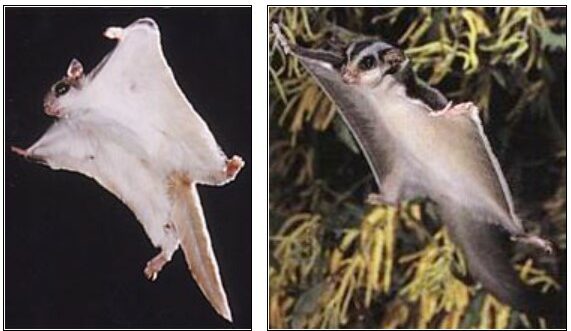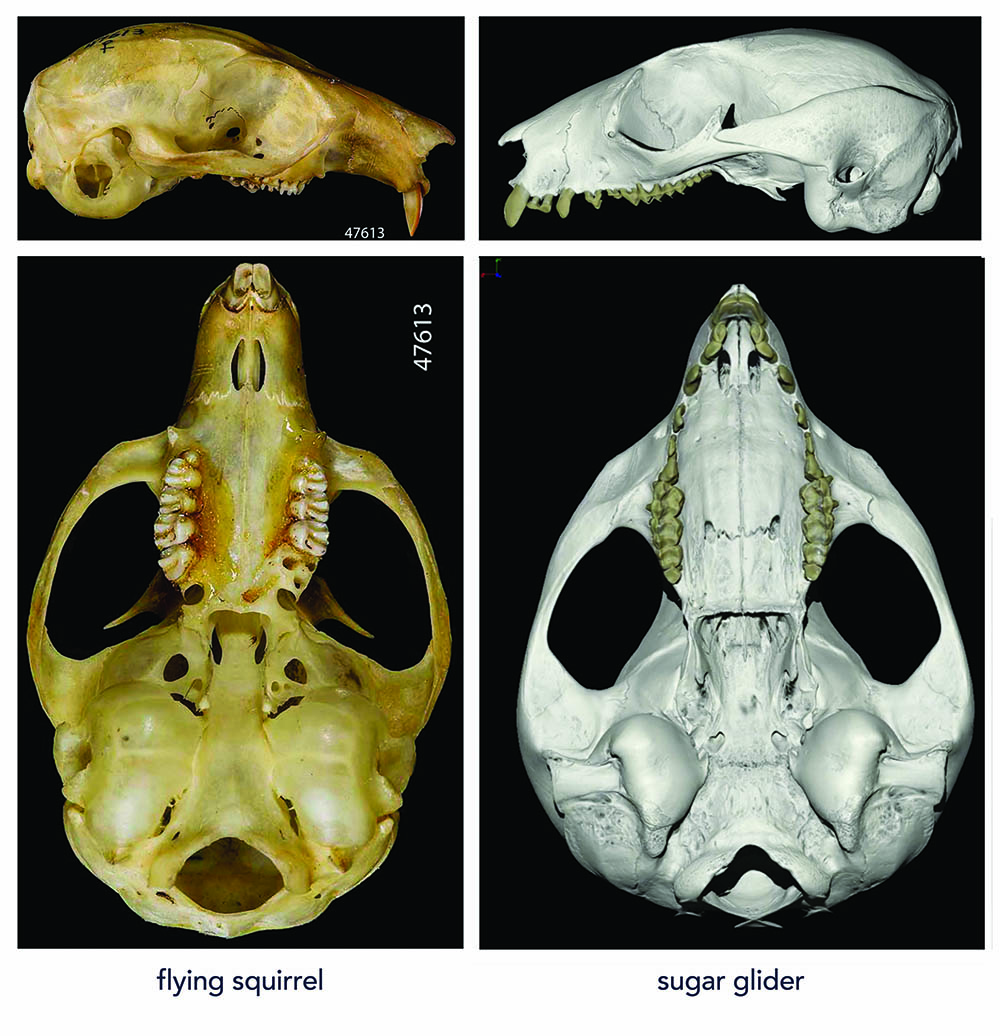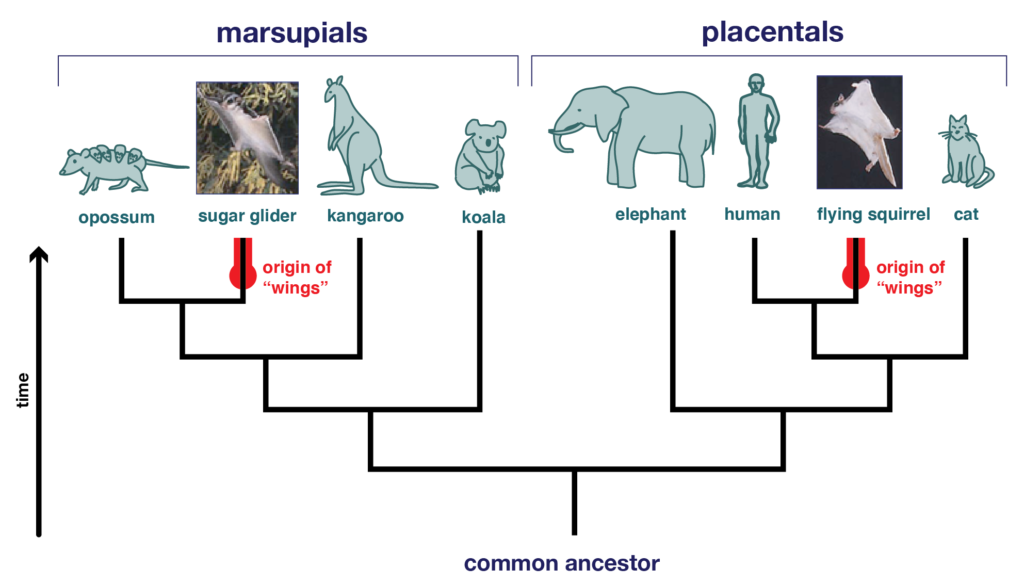In this module, you learned that homologies are similar traits that different lineages inherited from their common ancestor. Convergent traits, on the other hand, are similar but were not inherited from a common ancestor and instead evolved separately. Such traits often exist because two different lineages became adapted for similar lifestyles.
Sugar gliders and flying squirrels look amazingly similar. They are both furry animals of about the same size, with big eyes and a white belly. And they both glide from treetops using a thin piece of skin that is stretched between their legs. This piece of skin helps keep them stable while gliding.

However, these animals also have a range of differences:
- Sugar gliders have a pouch (like a kangaroo does), which provides shelter and safety for their tiny babies — at birth, a baby sugar glider is smaller than a peanut! In flying squirrels, on the other hand, most of the baby’s development happens inside the mother’s body, which supplies nourishment with a specialized organ called the placenta. Flying squirrels give birth to much larger babies and have no pouch.
- Sugar gliders have many more teeth than do flying squirrels.
- Sugar gliders have multiple holes in the bone that forms the top of the mouth and flying squirrels do not.

Sugar glider skull, Museum of Vertebrate Zoology, UC Berkeley; flying squirrel scan from Museum Victoria (Melbourne, Aus).
Sugar gliders are marsupial mammals and flying squirrels are placental mammals. They are not closely related to one another.
Considering all of the evidence, are the "wings" (actually flaps of skin stretched between the legs) of sugar gliders and flying squirrels homologous structures or convergent traits? (Click on the correct response.)
homologous structures convergent traits
This is definitely a tricky one. The "wings" of sugar gliders and flying squirrels are convergent traits, not homologies. Homologies are traits inherited from a common ancestor. Since sugar gliders and flying squirrels are very distantly related, it is unlikely that their common ancestor had flaps of skin stretched between its legs and that both modern animals inherited the trait from this animal. Instead, each lineage of small, nocturnal, tree-living mammals faced similar selective pressures and so evolved similar adaptations for gliding and tree-living.

You should now have a good grasp of the difference between homologies and convergent traits.
